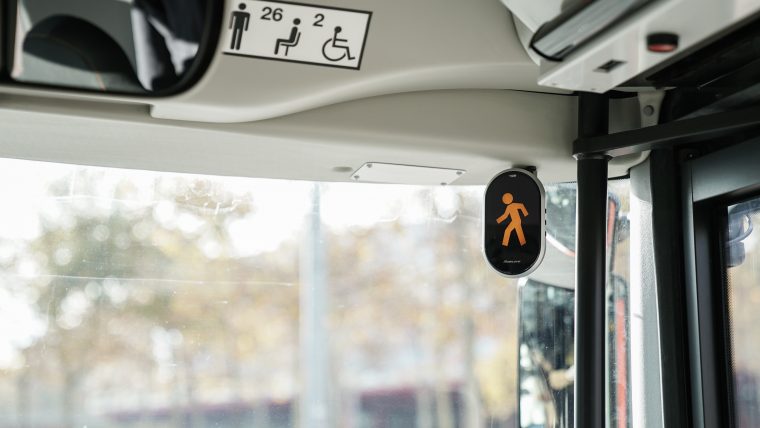The Autonomous Ready project warns of over 500,000 potential collisions in a year
The programme alerted drivers to 8,371 potential risks of cyclist collisions and to 73,915 potential risks of running over pedestrians from October 2020 to October 2021. The devices also warned of 439,164 possibles forward collisions.

Barcelona City Council and the Directorate-General for Traffic continue their work to strengthen the Autonomous
Ready Spain project, an initiative which, with support from the Mobileye technology provider,
involves promoting the installation of advanced driver assistance (ADAS) systems in private-vehicle and public-transport fleets , which frequently travel through the city.
These systems warn drivers of situations of potential danger, with the aim of preventing accidents before they happen.
The initiative has already been signed up to by 11 companies, mostly freight haulers,
which have equipped a total of 464 vehicles with the latest driver-assistance and data-collection technologies.
Under the project, institutions are using technology to help drivers with preventing accidents, above all regarding the most vulnerable in the mobility hierarchy (pedestrians, cyclists and motorcyclists).
The devices also allow the gathering of data from the environment, leading to better knowledge of mobility in the city and the behaviour of good freight fleets.
Reducing accident rates and developing detailed maps of sensitive areas
Studying data gathered by the system enables initiatives to be carried out to improve road safety and represents an opportunity for optimising the journeys of the companies
taking part and rationalising the use of public space.
90% of traffic accidents are estimated to be caused by human error. The Autonomous Ready Spain project predicts 80% of a driver’s possible errors.
Last year (October 2020-October 2021) saw these vehicles cover a total of
7,300,000 kilometres. The areas most travelled through were the entry to Barcelona through
the Llobregat axis and, inside the city, the Ronda Litoral and Eixample area.
The devices on board also detected and geo-located the presence of
cyclists and pedestrians in several streets in Barcelona during this period, which meant such vulnerable users
entered the field of vision of some of the sensors installed in the vehicles.
In higher-risk cases, thanks to the AI of the contributed technology, the devices issued drivers with an accident-alert warning. The alert has helped to prevent a total of 521,450 potential collisions, 82,286 of which could have involved vulnerable users.
The main data are as follows:
– FCW (forward collision warning): 439,164.
– BCW (bicycle collision warning): 8,371
– PCW (pedestrian collision warning):
73,915
As for the total number of detections made by these vehicles, collision warnings
represented 1 out of every 200 observations, approximately.
Observations of habits of the most vulnerable
The various vehicles made 3.9 million observations of cyclists travelling through the city during the above-mentioned period.
The technology allowed a breakdown to be given, whereby of the total number of bicycle users detected, 50% travelled along bike lanes, 30% along streets and the remaining 20% along cycle-friendly areas. So 70% of cyclists were using spaces intended for bicycles.
The time of greatest risk of collision for this group is between 10 am and 111 am.
The data corroborate the safety of bike lanes, given that 85% of the cyclist collision alerts occurred in streets without bike lanes.







